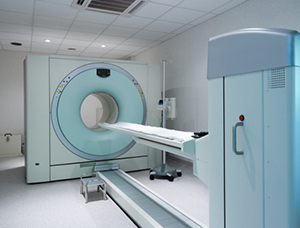In a single-institution study reported in JCO Oncology Practice, Kiser et al found that implementation of a quality improvement plan significantly reduced the frequency of positron-emission tomography (PET)/computed tomography (CT) radiotracer infiltration among a team of technologists. Introduction of new technologists resulted in some regression in improvement.
As stated by the investigators, “Accurate administration of radiotracer dose is essential to [PET] image quality and quantification. Misadministration (infiltration) of the dose can affect PET/[CT] results and lead to unnecessary or inappropriate treatments and procedures.”

Photo credit: Getty
Study Details
The study was conducted at Carilion Clinic (an integrated health-care organization) in Roanoke, Virginia. After the frequency of injection infiltration was determined with an initial team of five technologists, a quality improvement plan was instituted: the plan consisted of addition of an auto-injector to allow consistent infusion and flush parameters across injections, adjustment of uptake room setup to allow for improved access to both sides of the patient, and refresher training for venous access and injection technique. Frequency of infiltration was then reassessed among the five technologists and after the addition of seven new technologists to the team.
Key Findings
During the initial phase of the study, monitoring of 263 injections by the five technologists was associated with an infiltration rate of 13.3%. The infiltration rate for nonantecubital fossa injections (28.3% of 63) was higher than the rate for antecubital fossa injections (8.5% of 200).
After implementation of the quality improvement plan, the same five technologists monitored 278 injections, with an infiltration rate of 2.9% (78% decrease, P < .001). Infiltration rates were reduced from the initial phase for both nonantecubital fossa injections (7.0% of 71, P = .0026) and antecubital fossa injections (1.5% of 207, P = .0039). Auto-injector use resulted in 1 infiltration in 180 injections (0.6%), whereas 7 infiltrations occurred in 98 manual injections (7.1%).
In the subsequent phase, 12 technologists, including 7 new technologists, monitored 1,240 injections, with an infiltration rate of 3.1%. The rate for the seven new technologists was significantly higher than that of the five experienced technologists (6.1% vs 2.1%, P = .017). Use of larger needles (> 22 gauge) and not using the auto-injector were significantly associated with higher risk of infiltration for injections administered by the new technologists.
The investigators concluded, “A [quality improvement plan] can significantly improve and sustain injection quality; however, ongoing monitoring is needed as new technologists join the team.”
Jackson W. Kiser, MD, of Carilion Clinic, is the corresponding author for the JCO Oncology Practice article.
Disclosure: The study was supported by the North Carolina Biotechnology Center. For full disclosures of the study authors, visit ascopubs.org.

